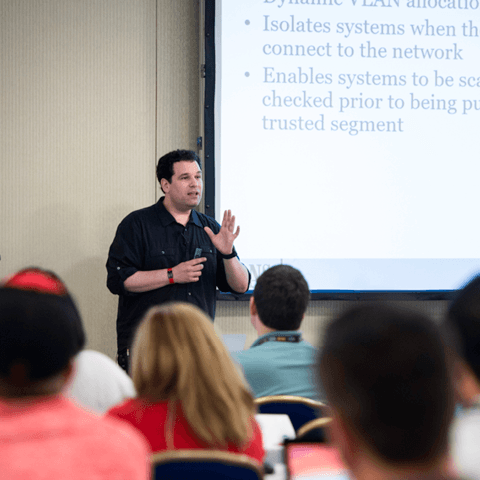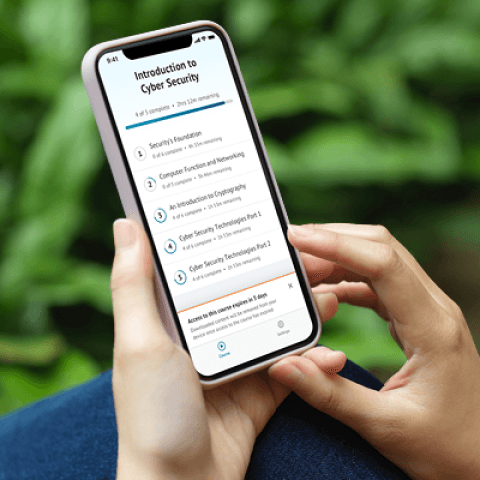SEC595: Applied Data Science and AI/Machine Learning for Cybersecurity Professionals


Experience SANS training through course previews.
Learn MoreLet us help.
Contact usBecome a member for instant access to our free resources.
Sign UpWe're here to help.
Contact Us
Apply your credits to renew your certifications
Attend a live, instructor-led class at a location near you or remotely, or train on your time over 4 months
Course material is geared for cyber security professionals with hands-on experience
Apply what you learn with hands-on exercises and labs
Explore and tackle real-world reverse engineering malware scenarios. Learn to dissect sophisticated Windows executables that dominate headlines and preoccupy incident response teams around the globe.
I really enjoyed this course. I felt that it was a good and logical next step after taking FOR610. The material made sense and was relevant to what I see at work every day.
FOR710: Reverse-Engineering Malware: Advanced Code Analysis prepares malware specialists to dissect sophisticated Windows executables, such as those that dominate the headlines and preoccupy incident response teams across the globe. This malware reverse engineering course not only includes essential background and instructor-led walkthroughs, but also provides students with numerous opportunities to tackle real-world reverse engineering scenarios during class.


Anuj Soni, Principal Reverse Engineer at United Healthcare, has over 15 years of experience enhancing organizational security postures. His expertise has led to the identification, containment, and remediation of multiple threat actor groups.
Read more about Anuj SoniExplore the course syllabus below to view the full range of topics covered in FOR710: Reverse-Engineering Malware: Advanced Code Analysis.
Malware authors employ evasion techniques and in-memory execution to hide data, hinder analysis, and thwart detection. First, we discuss the use of malicious steganography. Then we cover key steps in program execution, identifying how code is launched and labeling functions accordingly. Finally, we analyze shellcode with the support of WinDbg Preview.
Section 2 tackles the use of encryption in malware. Adversaries use cryptography for many reasons: to encrypt files, protect keys, conceal configuration settings, and obfuscate command and control (C2) communications. Reverse engineers must be prepared to investigate and articulate the purpose of routines in high-impact malware that implement encryption.
Section 3 covers automating malware analysis. We introduce Python, writing scripts to decrypt configuration data, deobfuscate strings, and extract payloads. We cover a Dynamic Binary Instrumentation (DBI) framework, injecting and executing code within a process to examine its internals. We write Python scripts to automate debugging and dump unpacked code.
In this section, we continue discussing approaches to automating malware analysis. We introduce Ghidra’s API and write Python scripts to accelerate static code analysis. We also examine the value of binary emulation frameworks and use the Qiling framework to simulate execution and deobfuscate code and data.
Section 5 allows students to flex new skills in an independent competitive environment. With extended access to a capture the flag (CTF) platform, students must recall key concepts and perform workflows discussed in class to succeed. This is an opportunity to analyze real-world, complex malware samples and reinforce your new advanced code analysis skills.
Malware analysts face attackers’ capabilities head-on, ensuring the fastest and most effective response to and containment of a cyber-attack. You look deep inside malicious software to understand the nature of the threat – how it got in, what flaw it exploited, and what it has done, is trying to do, or has the potential to achieve.
Explore learning pathMonitor the organisation’s cybersecurity state, handle incidents during cyber-attacks and assure the continued operations of ICT systems.
Explore learning pathResponsible for analyzing digital evidence from computer security incidents to derive useful information in support of system and network vulnerability mitigation.
Explore learning pathCybercrime Investigators navigate dark web forums, trace cybercriminal activity, and conduct covert investigations. They follow forensic and legal standards to gather evidence and respond to cybercrimes.
Explore learning pathExecute digital forensic operations under demanding conditions, rapidly extracting critical intelligence from diverse devices. Leverage advanced threat hunting and malware analysis skills to neutralize sophisticated cyber adversaries.
Explore learning pathAnalyze network and endpoint data to swiftly detect threats, conduct forensic investigations, and proactively hunt adversaries across diverse platforms including cloud, mobile, and enterprise systems.
Explore learning pathThis role investigates, analyzes and responds to cyber incidents. Find the SANS courses that map to the Incident Response SCyWF Work Role.
Explore learning pathSecurity Operations Center (SOC) analysts work alongside security engineers and SOC managers to implement prevention, detection, monitoring, and active response. Working closely with incident response teams, a SOC analyst will address security issues when detected, quickly and effectively. With an eye for detail and anomalies, these analysts see things most others miss.
Explore learning pathWhen purchasing a live, instructor-led course, add 4 months of online access. View price in the info icons below.
Add 6 months of hands-on skills practice. Add to your cart when purchasing your course.
I really enjoyed this course. I felt that it was a good and logical next step after taking FOR610. The material made sense and was relevant to what I see at work every day.
I was recently named our IR lead, and coming from purple teaming/pentesting I needed the content of this course to make meaningful improvements to the program. I feel well prepared to tackle the challenges ahead now.
The labs and exercises for the automation were excellent and really showed off what is needed to perform RE through automation.

Get feedback from the world’s best cybersecurity experts and instructors

Choose how you want to learn - online, on demand, or at our live in-person training events

Get access to our range of industry-leading courses and resources